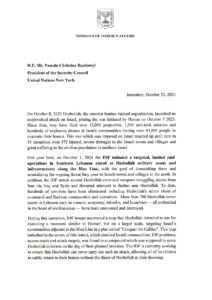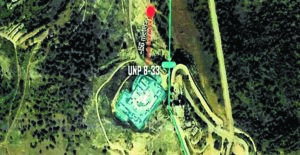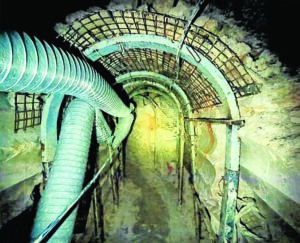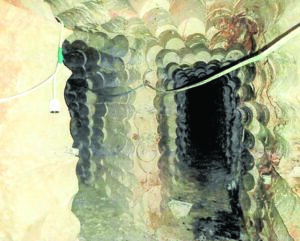New Delhi: Hezbollah was planning to launch ‘Conquer the Galilee’, which would have been an October 7, 2023 Hamas-like attack on Israeli civilians, only much worse.
Israel’s strike on Iran for the 1 October missile attack on Israeli territory is imminent and will happen with the coordination of the Americans, sources in Israel tell this newspaper. It is only the scale of the attack that is being debated. It is likely to be spectacular—something no one in the region, or the world, will miss. But an attack there will be—“deadly, precise and above all surprising” as promised by the Benjamin Netanyahu government. On 1 October, around 180 ballistic missiles were launched by Iran, most of which were intercepted by Israel’s Iron Dome system, even though a couple of IDF airbases were hit, apart from some of Israel’s major cities, including Jerusalem and Tel Aviv. There was no Israeli casualty in the attack.
“Everyone knows that there will be an attack. Even the Iranian regime knows that there will be an attack and they are cowering in fear,” said a source from Israel. “It’s psychological.”
“The coordination with the Americans is happening, because of the likely fallout. Israel will need the US help to contain the fallout” said the source, who added, “on Nasrallah there was no coordination. The US was not told about it. But an attack on Iran may have ramifications, hence coordination is necessary.”
The exact nature of the coordination is not known, whether it will be confined to intelligence sharing, or will also involve targeted attacks by the Americans themselves.
The source added that Israeli Prime Minister Netanyahu and US President Joe Biden have discussed the attack on Iran in their recent phone call, which was joined by Vice President Kamala Harris, who is the Democratic Party candidate for the US Presidential election to be held next month.
Broadly, on Israel’s radar are Iran’s military facilities, its nuclear installations, its economic interests including the energy sector, and Iran’s symbols of government.
Apparently, the US is “less supportive” of Israel attacking either Iran’s energy or nuclear sector, as that may have far-reaching consequences, internationally. But an attack on Iran’s military interests is certain, because the Iranians had targeted Israeli military installations in the 1 October attack.
Sources say that the Israeli response is likely to be a combination of all these targets.
But it will not be a clandestine attack for certain. “Till last night we have been able to show that we have weakened the Iranians, but Middle East goes by visuals. Restraint is considered weakness in this region. The government also needs to send out the message to its citizens that it can protect them. So it will be noisy, and visible to everyone,” said the source.
Sources also say that the retaliation debate is divided into two camps—one wants to go all out and hit all the targets, and pay the price now. While others do not want matters escalated to that extent, yet.
However, there is no doubt that the Iranians have been weakened considerably, say sources. The Iranian octopus’ two arms have been severely impacted—Hamas and Hezbollah. The dismantling of the command and control structure of the Hezbollah by Israel—where the terrorist group’s layers of leadership, starting from the top, have been wiped out—has incapacitated Iran to a large extent. “They invested 20 years in the Hezbollah, all that is gone,” said the source. Interestingly, now Hezbollah is seeking peace. Earlier last week, the Hezbollah deputy leader, Naim Qassem said that they were ready for a ceasefire with Israel. The question now is if this means that the Hezbollah is ready to delink itself from Iran.
HEZBOLLAH’S PLAN TO ‘CONQUER THE GALILEE’
Sources say that Israel now needs to have an exit strategy from Lebanon ready. Israel has no intention to stay in Lebanon, where the Israel Defense Forces (IDF) has launched limited ground operations as part of its Operation Northern Arrows. The forces have crossed the Blue Line that divides Israel and Lebanon and gone inside 2-3 km to areas where the Hezbollah is entrenched militarily—areas from where it launches rocket attacks on Israel. The goal is to stabilize these areas, without them slipping back into Hezbollah control.
Northern Arrows was launched in September with the specific objective of resettling the civilian population in the north. Around 63,500 people have been evacuated from the north as they were coming under intense fire from the Hezbollah.




Sources told this writer
Amid this has come the revelation of an October 7 like operation that was being planned by Hezbollah.
On Thursday, 10 October, Israel’s Foreign Minister Israel Katz took matters to the president of the United Nations Security Council, Pascale Christine Baeriswyl, to explain that during the limited ground operations, the “IDF troops uncovered a map that Hezbollah intended to use for executing a massacre similar to Hamas’, but on a larger scale, targeting Israel’s communities adjacent to the Blue Line in a plan called ‘Conquer the Galilee’.”
“This map…which detailed Israeli communities, IDF positions, access roads and attack targets, was found in a compound which was supposed to serve Hezbollah terrorists on the day of their planned invasion,” the letter adds.
It appears that Hezbollah’s “grand design” was to launch attacks on Israel and for this purpose it erected over 30 military outposts along the Blue Line, under the guise of the NGO “Green Without Borders”. “These outposts were manned by the Radwan elite forces trained exactly for this purpose,” says the letter. The IDF has dismantled these outposts.
The IDF has found a network of tunnels, trenches and bunkers used by Hezbollah’s Radwan Force 2-3 km inside the Blue Line at places like Kfarkela, Meiss El Jabal, Ayta ash Shab, Naqoura area, etc.
The Radwan is a lethal force raised by the Hezbollah to target Israel specifically. Sources say that Radwan’s commanders have sometimes two-three decades of military experience.
According to the letter, the “networks of tunnels and fortified underground complexes” contain “advanced weaponry, command centers, barracks and more.”
In fact, sources say that these underground complexes can house 800-1,000 Hezbollah terrorists at any time, who just have to come out and enter Israeli territory.
While six cross-tunnels “were identified and sealed by the IDF between 2018 and 2019”, the UNIFIL “has not gained access to their entry points on the Lebanese side until today”, says the letter. The letter adds that “Another cross tunnel, crossing approximately 10 meters from the Marwahin area in Lebanon into Israeli territory near the community of Zar’it, was recently identified and neutralized by the IDF.”
The UNIFIL or United Nations Interim Force In Lebanon, which is stationed on the Lebanese side of the Blue Line is supposed to keep the area free from military assets except for the UNIFIL itself and the Lebanese army. But it has failed to do so.
In fact, the role of the UNIFIL too is being questioned in the letter: The Hezbollah has been deliberately positioning “assets near UN locations, such as a Hezbollah tunnel shaft discovered just 150 meters from UNIFIL post 8-33…” “This development warrants a comprehensive investigation as to how such infrastructure was built in such proximity to UNIFIL positions without UNIFIL detecting it and reporting on it. This concerning situation creates a volatile environment for UN peacekeepers and should alarm both the United Nations and the Troop-contributing countries of UNIFIL,” adds the letter.
This has to be seen in the context of the involvement of UNRWA activists in Gaza in Hamas activities.
Two UNIFIL workers were injured in Israeli tank fire on Thursday at Naqoura, resulting in worldwide condemnation.
The letter goes on to add that “these patterns highlight the extent of Hezbollah’s military entrenchment in southern Lebanon and its tactic of embedding military infrastructure within civilian areas to conceal their operations.” The Israeli foreign minister accuses the Hezbollah of thus committing “a double war crime: using the local Lebanese population as a human shield by placing weapons within civilian homes, and deliberately targeting Israeli civilians with these weapons.”
The letter also accuses the Hezbollah of using “the crossings between Syria and Lebanon to smuggle arms from Iran, including through the Masnaa international border crossing”.
The letter then asserts Israel’s “right to take all necessary measures to protect itself and its citizens from ongoing hostilities by Hezbollah and the Iran-led axis.” “While Israel is not seeking a full-scale war, it will take all required actions to restore security along its northern border and ensure the safe and secure return of its citizens to their homes and communities…”
NEXT STEP
Israeli sources are clear that the IDF will go further into southern Lebanon if required. But there will not be any ceasefire. When asked about the possibility of a regime change in Iran, there is unanimity among Israeli voices—that Israel cannot do it alone. Israel needs support, maybe some sort of an international coalition. “Iran is not just Israel’s problem, it is the world’s problem,” said a source from Tel Aviv.
Essentially, all that Israel is looking for is the absence of war, which need not necessarily mean peace. Ironically, it can be achieved only by going to war.

